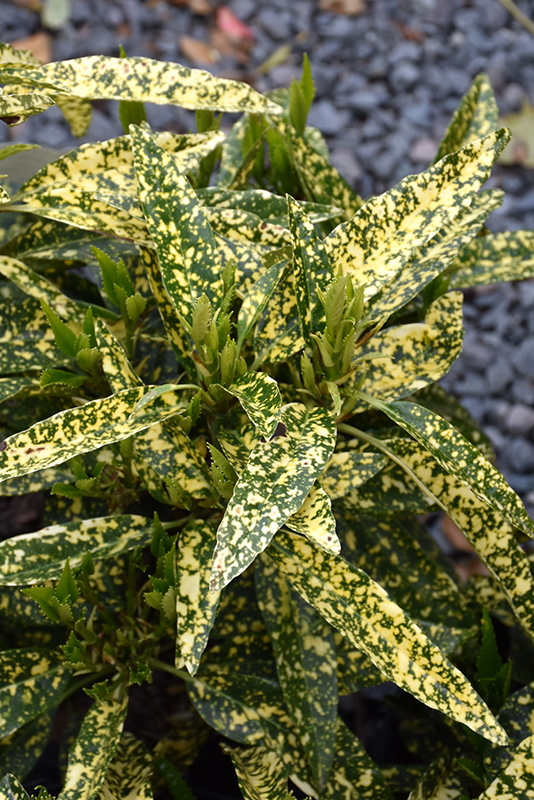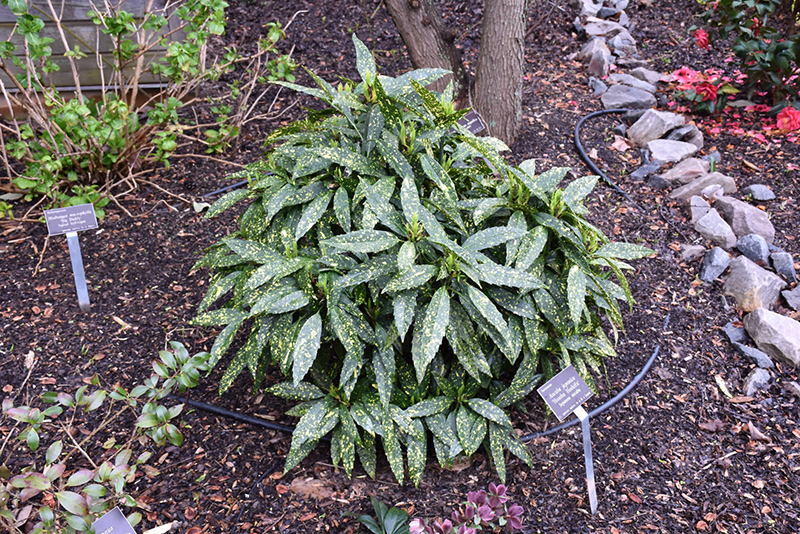>> Home
Hosoba Hoshifu Aucuba
Aucuba japonica 'Hosoba Hoshifu'
Height: 6 feet
Spread: 6 feet
Sunlight:
![]()
![]()
Hardiness Zone: 7
Other Names: Japanese Aucuba, Japanese Laurel
Description:
This stunning evergreen solves the problem of the most shaded garden; deep dark green foliage with vivid yellow variegation; ideal as a dense screen; drought tolerant once established; protect from cold winter winds
Ornamental Features
Hosoba Hoshifu Aucuba is primarily grown for its highly ornamental fruit. It features an abundance of magnificent red berries from late fall to late winter. It has attractive yellow-spotted dark green foliage with hints of buttery yellow which emerges light green in spring. The glossy pointy leaves are highly ornamental and remain dark green throughout the winter.
Landscape Attributes
Hosoba Hoshifu Aucuba is a dense multi-stemmed evergreen shrub with an upright spreading habit of growth. Its average texture blends into the landscape, but can be balanced by one or two finer or coarser trees or shrubs for an effective composition.
This is a relatively low maintenance shrub, and can be pruned at anytime. It has no significant negative characteristics.
Hosoba Hoshifu Aucuba is recommended for the following landscape applications;
- Accent
- Mass Planting
- Hedges/Screening
- General Garden Use
Planting & Growing
Hosoba Hoshifu Aucuba will grow to be about 6 feet tall at maturity, with a spread of 6 feet. It has a low canopy, and is suitable for planting under power lines. It grows at a fast rate, and under ideal conditions can be expected to live for approximately 20 years. This variety requires a different selection of the same species growing nearby in order to set fruit.
This shrub does best in a location that gets morning sunlight but is shaded from the hot afternoon sun, although it will also grow in full shade. Keep it away from hot, dry locations that receive direct afternoon sun or which get reflected sunlight, such as against the south side of a white wall. It does best in average to evenly moist conditions, but will not tolerate standing water. It may require supplemental watering during periods of drought or extended heat. It is not particular as to soil pH, but grows best in rich soils. It is somewhat tolerant of urban pollution, and will benefit from being planted in a relatively sheltered location. Consider applying a thick mulch around the root zone in winter to protect it in exposed locations or colder microclimates. This is a selected variety of a species not originally from North America.

